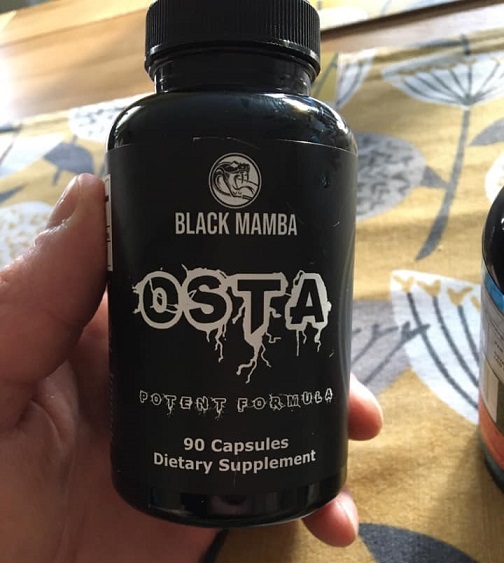Ostarine vs. RAD-140: Which is More Effective?
 Disclaimer: Only researchers are authorized to administer SARMs, as they are not FDA-approved for cosmetic use and may have adverse effects. Dr. Touliatos is available for consultation should readers have any questions or concerns.
Disclaimer: Only researchers are authorized to administer SARMs, as they are not FDA-approved for cosmetic use and may have adverse effects. Dr. Touliatos is available for consultation should readers have any questions or concerns.
Selective androgen receptor modulators (SARMs) are medications that are currently under investigation. In research, SARMs are shown to facilitate anabolism in organisms by activating androgen receptors (1).
They are intended to assist individuals in the development of muscle mass without the adverse effects of anabolic steroids, made possible via tissue selectivity. Nevertheless, we have observed SARMs to exhibit comparable levels of toxicity in some users during clinical research (2).
Ostarine and RAD-140 are two SARMs that are periodically employed in bodybuilding and sports, despite their significant differences.
Contents
Ostarine vs. RAD-140: Which Compound is More Effective?
Muscle Hypertrophy
Ostarine can increase lean muscle mass and reduce body fat by up to 10 pounds.
Nevertheless, the effects of Ostarine on women are distinct from those on men, as it can induce increased anabolism in females. We have observed women gain more than 15 pounds of lean body mass during a cycle of Ostarine, in conjunction with lifting weights and eating in a caloric surplus.
Some consider RAD-140 to be a more toxic SARM than Ostarine. We find that RAD-140 is frequently utilized during bulking cycles, with users commonly aiming to build substantial muscle hypertrophy and strength. On RAD-140, users may gain up to 15 pounds of lean muscle based on our patients’ results.
Strength

Ostarine can increase muscular strength notably, although it is unlikely to achieve the same level of efficacy as RAD-140 in this regard.
RAD-140 is one of the most efficacious SARMs for enhancing strength, with only YK-11 or S23 being comparable in our experience.
In this respect, RAD-140 may be comparable to some of the most potent AAS (anabolic-androgenic steroids). Our patients have reported substantial strength improvements on RAD-140, including an increase of 60 pounds in their bench press and 90 pounds in their leg press from the initial cycle.
Fat Loss

It is generally recognized that Ostarine is a more effective SARM when cutting as a result of its lipolytic properties. A clinical study found Ostarine reduced fat mass by 5.77% following 12 weeks of supplementation at 3 mg/day (3). By 21 weeks, the participants had lost 14.4% of their total fat mass.
Ostarine and RAD-140 can both decrease subcutaneous body fat. However, Ostarine users may appear leaner after a cycle because RAD-140 users have a tendency to follow a high-calorie diet. As a result, RAD-140 users are more susceptible to short-term water retention and edema, which can obfuscate muscle definition during the cycle.
Ostarine vs. RAD-140: What Are the Negative Effects?
- HPTA impairment
- Cardiotoxicity
- Hepatotoxicity
RAD-140 can cause more toxic effects in users, resulting in harsher adverse effects compared to Ostarine.
Testosterone Suppression
Some Ostarine users may not implement PCT (post-cycle therapy) if they do not experience hypogonadal symptoms.
In contrast, PCT is more commonly administered following RAD-140 due to its suppressant effects.
We have diagnosed several individuals with hypogonadism subsequent to RAD-140 use. Consequently, this SARM may be more suppressive than initially anticipated, at least for certain individuals.
- Endogenous testosterone levels can recover naturally several weeks after an Ostarine cycle. This process may require 1–2 months for an individual who is clinically hypogonadal from Ostarine.
- Research indicates that restoration of the HPTA (hypothalamic-pituitary-testicular axis) can be facilitated by post-cycle therapy (4). This can include the use of Nolvadex or Clomid and thereby reduce recovery time.
Cholesterol
Ostarine can result in a moderate increase in blood pressure by reducing high-density lipoprotein (HDL) cholesterol. Guo et al. (2022) described this reductive effect as “significant (5).”
Therefore, it is not recommended that an individual with hypertension consume ostarine or RAD-140, as both of these compounds can elevate the risk of myocardial infarction.
Furthermore, research suggests that the dose of RAD-140, or ostarine, can influence the degree to which a user’s blood pressure remains elevated (6).
Liver Toxicity
Studies indicate that SARMs can cause hepatotoxicity in some users, causing an increase in alanine transaminase (ALT) and aspartate aminotransferase (AST) values.
Flores et al. (2020) reported a case of a 49-year-old male who developed hepatocellular-cholestatic liver injury after supplementing with RAD-140 for four weeks, with sporadic use continuing afterward (7)
Additionally, he had been taking venlafaxine, an antidepressant, for 11 months prior to his RAD-140 cycle.
Consequently, it is recommended that antidepressants or other hepatotoxic supplements or medications not be combined with SARMs.
Koller et al. (2021) documented cholestatic injury in a man within three weeks of taking Ostarine (8).
After the cessation of his cycle, he experienced jaundice, from which he recovered three months later.
- It is advised for individuals who elect to utilize RAD-140 or Ostarine to monitor their liver enzymes and supplement with tauroursodeoxycholic acid (TUDCA) at a dosage of 500 mg per day.
- Moreover, it is imperative to refrain from consuming alcohol to reduce hepatic stress.
Which SARM Improves Body Composition the Most?
Despite RAD-140 being widely regarded as the more potent SARM, we have observed Ostarine transformations that are equally significant. This is due to Ostarine users commonly adopting a calorie-deficient diet, which can result in a greater amount of fat being burned.
We have observed the following in Ostarine users when they are simultaneously eating in a caloric deficit:
- Improved definition of musculature
- Increased vascularity
- An increase in the visibility of abdominal muscles
In contrast, we find RAD-140 users can be less inclined to prioritize fat loss through their diet, preferring to consume a higher number of calories to promote anabolism.
RAD-140

The aforementioned user consumed RAD-140 at a modest dosage of 10 mg per day for 8 weeks. His body fat has significantly decreased, despite ingesting a small calorie surplus. In addition, his muscle hypertrophy has increased, resulting in an approximate weight gain of 10 pounds on the scales.
If he had increased his dosage to 20 mg per day, he may have experienced a combination of increased muscle growth and enhanced fat loss. In our experience, a dose more appropriate for women is 10 mg per day. A reduced dosage can result in less severe side effects.
Ostarine

The above user cycled Ostarine at a dosage of 20 mg per day for 45 days. He has lost 7 pounds on the scales, despite gaining a significant amount of lean muscle, particularly in the deltoids and biceps.
What Are the Common Dosages?

Men typically consume 10–20 mg of Ostarine daily, while women commonly take 5–10 mg. The dosages that fall within the upper range appear to be more prevalent.
The dosages of RAD-140 are often similar to those of Ostarine, indicating that RAD-140 is a more potent SARM per milligram.
What is the Price of Each SARM?
- Ostarine costs $49.99 for a 30-mL bottle containing 25 mg/mL.
- The same volume bottle of RAD-140 at 15 mg/mL costs $59.99.
The prices listed above were obtained from Sports Technology Labs.
RAD-140 is generally priced at a significantly higher rate per milligram than Ostarine.
Conclusion
In conclusion, we have experienced RAD-140 to be more advantageous than Ostarine in terms of anabolism. However, it can be argued that Ostarine is the less harsh compound, with the potential to cause fewer adverse effects.
Consequently, novices may be more inclined to cycle Ostarine over RAD-140.
Furthermore, the cost of RAD-140 can work out to be approximately double that of Ostarine.
Co Authors :
References
(1) https://pubmed.ncbi.nlm.nih.gov/16932274/
(2) https://pmc.ncbi.nlm.nih.gov/articles/PMC11277069/
(3) https://www.endocrinepractice.org/article/S1530-891X(24)00333-1/
(4) https://pubmed.ncbi.nlm.nih.gov/37951896/
(5) https://academic.oup.com/jes/article/6/8/bvac099/6619269
(6) https://pubmed.ncbi.nlm.nih.gov/35233331/
(7) https://pubmed.ncbi.nlm.nih.gov/32140660/
(8) https://pmc.ncbi.nlm.nih.gov/articles/PMC8180234/



